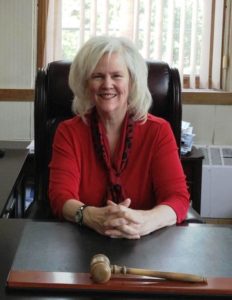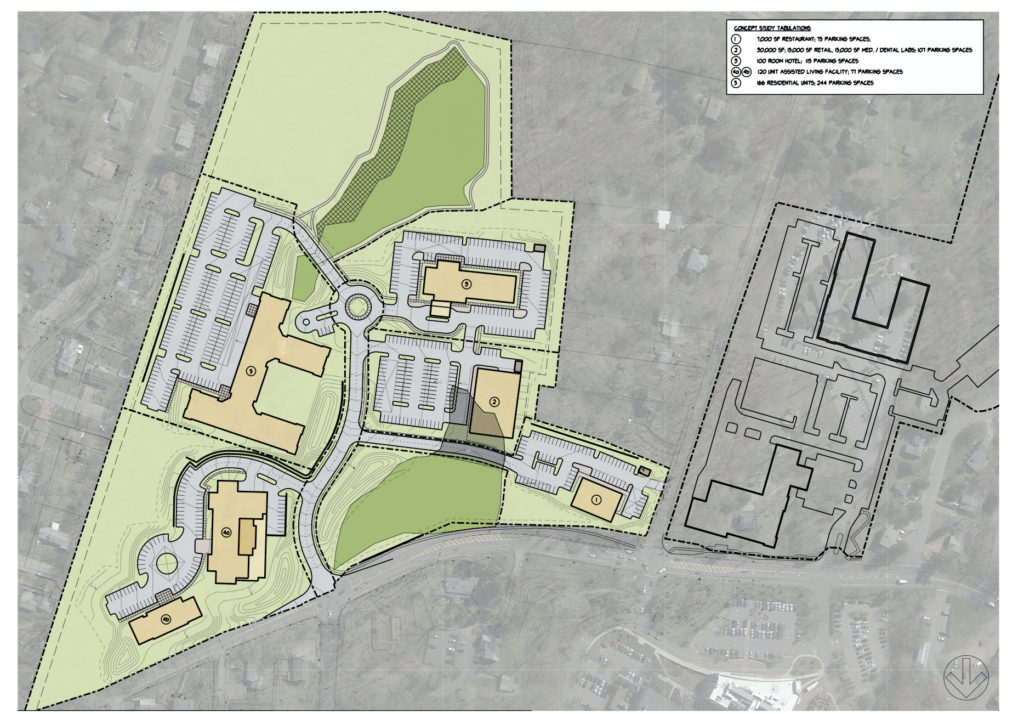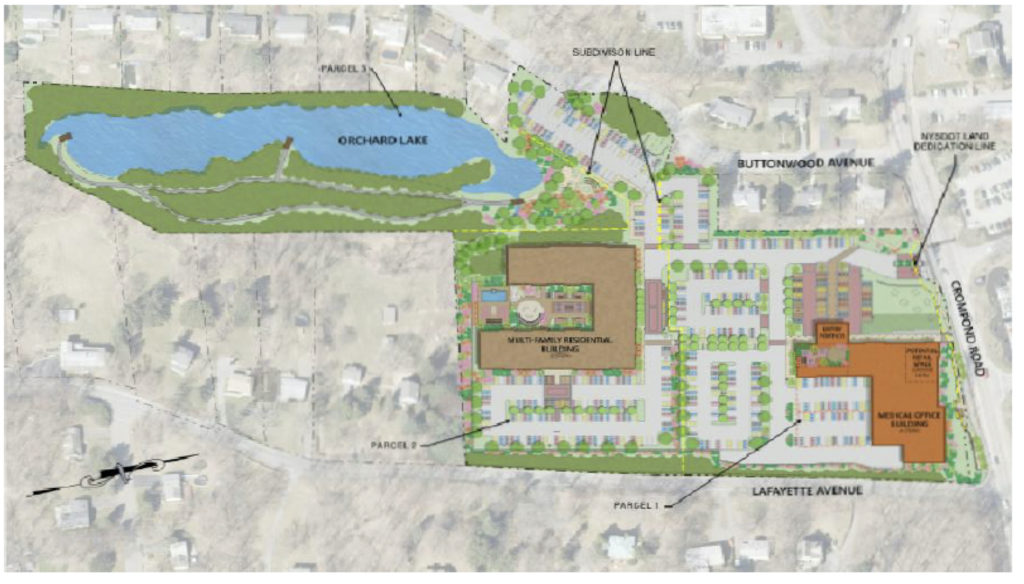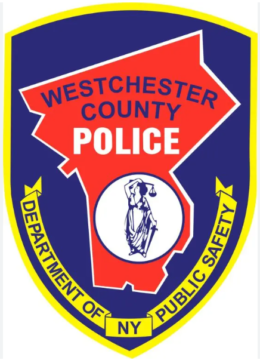
An invitation by one local town in Northern Westchester for development generated proposals for several hundred thousand square feet of construction, but will most likely win approval only with a major reduction in the scope of the builders’ projects.
The town of Cortlandt sprawls over nearly 40 square miles of bucolic, leafy suburban homes that many New York City residents often think of as “upstate.”
The confused geography of those living in Queens or the Bronx is understandable when their worldview is constrained by concrete landscapes hosting roaring subway cars and towering brick and steel buildings.
For those who live here in Northern Westchester, Cortlandt is a collection of villages populated by dozens of local neighborhoods. Woods and streams abound just off the beaten path. The hustle and bustle of Manhattan is far away, and that’s just the way locals want it.
Commercial development in Cortlandt has traditionally been confined to the long stretch of Route 6 where car dealerships, large shopping centers and retail stores line both sides of the road.
Economic development in Cortlandt has for the most part been organic and localized on a small scale. This is the ultimate bedroom community, with a large percentage of the population traveling to New York City for their livelihoods.
One of the major local employers, and a growing economic engine here, is the New York-Presbyterian Hudson Valley Hospital. So town planners in Cortlandt, spurred in part by a need to replace the loss of tax revenue from the impending closing of Indian Point by Entergy, turned to the medical industry in a move to grow new business.
Build-out will generate $4 million annually in
taxes to Cortlandt, say the developers
Losing Indian Point will cost the village of Buchanan $2.6 million annually in property tax revenue, nearly half of its $6.2 million budget. Cortlandt is out $800,000 in property taxes and the Hendrick Hudson School District is in danger of losing $26 million each year without Indian Point.
The developers of the new projects say their entire build-out will generate $4 million annually in taxes to Cortlandt, but because their properties are in the Lakeland school district, none of that money will offer relief to Hendrick Hudson.
The efforts to generate revenue lost by Indian Point’s closing led Cortlandt to propose a new Medical Oriented District (MOD), inviting developers to build on property across Route 202 from the hospital.
That invitation was welcomed a few years ago by two developers – Val Santucci’s V.S. Construction Corp. and Gyrodyne Corp. — who have presented plans to the town for what local residents are decrying as a massive invasion of their neighborhood.
NEARING A DECISION
After three years of discussion and public meetings, those three parties – the town, the developers, and the local residents – are nearing a possible decision at the April town board meeting that could potentially bulldoze the woods in the neighborhood for apartments, assisted living facilities, a hotel, commercial offices and a restaurant for a total of several hundred thousand square feet of development. [The April meeting could be affected by the coronavirus crisis.]
Hotels, restaurants, retail, and structured parking all are
deemed acceptable uses in the Medical Oriented District
In the town’s proposed Medical Oriented District, acceptable development has been widely expanded to a wide range of uses. They include clinics, rehabilitation centers, medical office space, laboratories, research facilities, assisted living residences, independent senior living with services, skilled nursing facilities, and many others.
Also included in the MOD are residential apartment options called “multigenerational, millennial and empty nest, or a combination of these residential types,” professional office space, cafes, bakeries, retail, restaurants (except drive-thru), other food services, and banks.
Another category in the district acceptable for development calls for hotels, inns, and bed and breakfasts, along with religious facilities and structured parking.
REZONING RESIDENTIAL TO COMMERCIAL
In other words, there really isn’t any kind of development that the town is ruling out of the proposed Medical Oriented District.
The designated area encompasses 28 acres owned by V.S. Construction Corp. off of Lafayette Avenue and 13.8 acres off of Buttonwood Avenue owned by the Gyrodyne Corp. Both parcels are directly south of New York-Presbyterian/Hudson Valley Hospital.
The new district would allow for rezoning of the current R-10 residential zoning of 10,000 square-foot minimum lots into approval for commercial development.

Santucci’s Evergreen Manor project (at right) would include an 89-unit assisted-living facility and 31-unit independent-living building; a 166-unit, market-rate residential building; a 90- to 100-room hotel with 115 parking spaces; a 7,000-square-foot restaurant with 75 parking spaces; and a two-story, 30,000-square-foot building with retail and medical/dental labs.

The Gyrodyne plan (at left) calls for replacement of the existing 33,000 square feet of medical offices with a new development of 100,000 square feet of medical office space, and 4,000 square feet of retail space, with a two-level parking garage, as well as a 200-unit multi-family building.
If all those projects were built, over 1,200 parking spaces would be required. By way of comparison, the parking garage at the hospital holds 450 cars.
The Zoning Board deems the project ‘too dense for Cortlandt’
The Cortlandt Zoning Board, in a memo to the Town Board in early March, spelled out the challenges that the developers must overcome to win town board approval for their proposals. And those objections to the overall scale of the project sound overwhelming.
The Zoning Board wants more extensive traffic studies, larger buffer zones to Tamarack and Buttonwood avenues, studies proving that there is sufficient demand for the proposed residential units, an affordable component to the apartments, and other issues.
The Zoning Board states that the project is “… too dense for Cortlandt” and that the medical uses “… were being overshadowed by other uses.” The board also states that the “two sites seem to be completely disconnected from each other.”
Given the overwhelming size and scale of the two proposals, and the strong opposition from the neighborhood, town officials appear unlikely to green light anywhere near the development being proposed.
The limited approvals that seem likely – one assisted living facility and expansion of the existing medical offices – might not be enough for the projects to become economically feasible.
DEVELOPERS GREENLIGHT $3 MILLION FOR TRAFFIC MODIFICATIONS
Another concern voiced is the impact of new traffic on Route 202. State Department of Transportation approval for the millions of dollars of signal improvements and turning lanes is uncertain. The developers have offered to pay $3 million of the estimated costs.
The next crucial date in the ongoing contest to win approvals for the developers is April 14, when the town board holds its next public hearing, and when it might cast a vote to decide the fate of the projects.
‘We fully recognize that there are issues,’
says a spokesman for the developers
Geoff Thompson, spokesperson for the developers V.S. Construction and Gyrodyne, said the two companies will work with the town for approval of an economically viable project.
“We are committed to the Town’s proposed Medical Oriented District (MOD) and to playing a key role in it.
“For the concept to move forward, we fully recognize that there are issues, most notably traffic, that must be satisfactorily addressed. We have listened to town officials, their professional engineering and traffic experts, and to the residents.
“We are reviewing their comments and are considering adjustments to our proposal that address the concerns, while assuring the economic viability of the MOD. The key to the success of the MOD will be striking that balance, and we are confident that this can be accomplished.”
PUGLISI WANTS ‘ONE USE PER PROPERTY’
Town Supervisor Linda Puglisi has made her position abundantly clear: she will vote against approving the entire projects proposed by the two developers.
The developers want approval of all their projects upfront with mutually agreed phases of building. The town would not seem to find that acceptable, instead approving one project at a time.
“I’ve said all along that the proposals are too big,” Puglisi told River Journal North. “The concept of the Medical Oriented District is to encourage growth in that hub with physical proximity to the hospital, but the buildings don’t have to all be built at once.
“I can’t speak for the other members of the board, but I will not vote to approve these proposals for the full build-out,” Puglisi said. “In my opinion, we should scale it back to just one use per property. In the future, if they want to have another dialogue with the community, we could discuss it, but not now.”
THREE-PHASED CONCEPT
“We’re well aware of the town board’s concerns about phasing,” attorney David Steinmetz said at the January 2020 town board meeting. “The supervisor and the town board have done an
excellent job of convincing both applicants to
phase the developments.
An online petition opposing the proposals
has more than 800 signatures
“We believe phased proposals have been presented to you. I can tell you that our client is, by no means, proposing to build all of the components of its mixed-use development at once. It has been presented as a three-phase concept, and we look forward to continuing to review that, and explore that, and work cooperatively with the town, its staff, as well as the public. “
Steinmetz represents the Santucci company’s Evergreen Manor proposals.
An online petition in opposition to the proposals has more than 800 signatures, and residents have turned out in force at public hearings before the town board last November and this January.
Speaking at the January meeting, David Weinberger of Birchwood Lane questioned the purpose of the new district, and how it would improve healthcare in the area.
“It’s certainly not [by building] a hotel and a restaurant. It’s not [by] putting in more offices that are going to generate outcomes that provide better care,” he told the town board. “If we want to think about improving patient outcomes and improving the quality of our lives in this community, we need to think about something other than just building things.”
Jim Roberts is a freelance business writer based in Peekskill.






